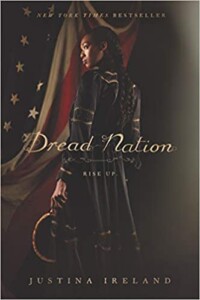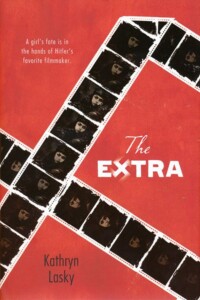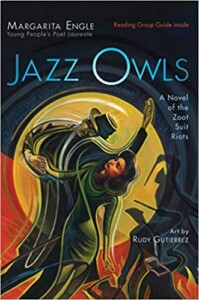The time-traveling power of historical fiction gives me all the feels, so it’s on display this month in the Library’s Teen Scene.

Thinking back to my history classes in school, I never did feel a connection to anyone’s story. All those names and dates just glazed me over. I preferred to dream about the lives of others through old black & white movies on cable within the social contexts of other eras. I’d invest 3 hours of any old day watching the 1959 film The Diary of Anne Frank (starring Millie Perkins), and I did often. While on spring break with a friend and her family in April of our senior year, I wandered into a small bookshop where I bought Anne Frank’s diary and I traveled through time. It was my first trip. The diary itself is a primary source war document (not historical fiction), and in it I had just discovered humanity in history. Like many protagonists after Anne, both real and invented, Anne is immortal, beloved, and just one empathetic story among millions through the single lens of the Second World War. Even now, reading historical fiction is, like streaming today’s series and movies, so often the gateway to reading history on my phone while I binge watch. Maybe you do this, too!
It’s no surprise that WWII is a dominating force in literature. The war changed the world and continues to fascinate and reveal to no end. Contemporary historical fiction allows for the inclusion of the real cultural and ethnic diversity across wartime experiences, so there has never been a better time to explore history through fiction. Find teens throughout Europe; teens across Asia; teens representing every racial and ethnic group in North America; teens in…(literally) the world; teens sent to war for adult battles; Asian American teens incarcerated; teens in European concentration camps; teen survivors; teens who left home for the last time; religious perspectives; political perspectives; immigrant family perspectives; refugee perspectives; interpersonal conflicts, political interpretations and narratives; and it’s all rife with the mistakes, indignities and injustices inflicted upon perceived enemies. While the stories are imagined, the events, circumstances, and human experiences are real. Whew! Heavy.
Our January display reaches back even further to the sinking of the Titanic with The Watch that Ends the Night, a story told through correspondence in verse, and includes a haunting personification of the Iceberg that waited patiently to open the hull of the ship.
You’ll also find the new and highly anticipated So Many Beginnings: A Little Women Remix, by Bethany C. Morrow where the March sisters Meg, Beth, Jo, and Amy build a new life in the Freedpeople’s Colony of Roanoke Island, a refuge for those who are newly emancipated. Like Louisa May Alcott’s original semi-autobiographical novel, Morrow’s historical novel takes place within the context of the U.S. Civil War with all of its own social and political complexities.
Here are more stories you’ll find on our display this month:

Dread Nation, by Justina Ireland
Imagine a day the soldiers who perished at the Battle of Gettysburg suddenly walk again. Civil War Zombies! Jane lives in a new America where the Native and Negro Reeducation Act requires training of certain youth to put down the dead to protect the rich. This is not the life Jane wants for herself!
Leni Riefenstahl, the real-life favorite filmmaker of Adolf Hitler, picks Django, Lilo, and Lilo’s mother out of a concentration camp lineup to serve as extras in Leni’s newest film. The trio are starved, constantly guarded, and forced to work as film slaves on a glamorous movie set. Their lives are in Leni’s deadly hands, but Lilo will take matters into hers.
The baggy suits worn by African American, Latino and Jewish youth from Harlem to Los Angeles in the 1930s and 40s were considered unpatriotic at the time, due to the overuse of unnecessary fabric. The Zoot Suit then became a racist symbol of delinquent youth, and the scapegoat for racial violence. Young Peoples Poet Laureate Margarita Engle tells the story of the Zoot Suit Riots in verse about the real clash between white U.S. sailors and Latino youth in a 1943 L.A. dance hall.


